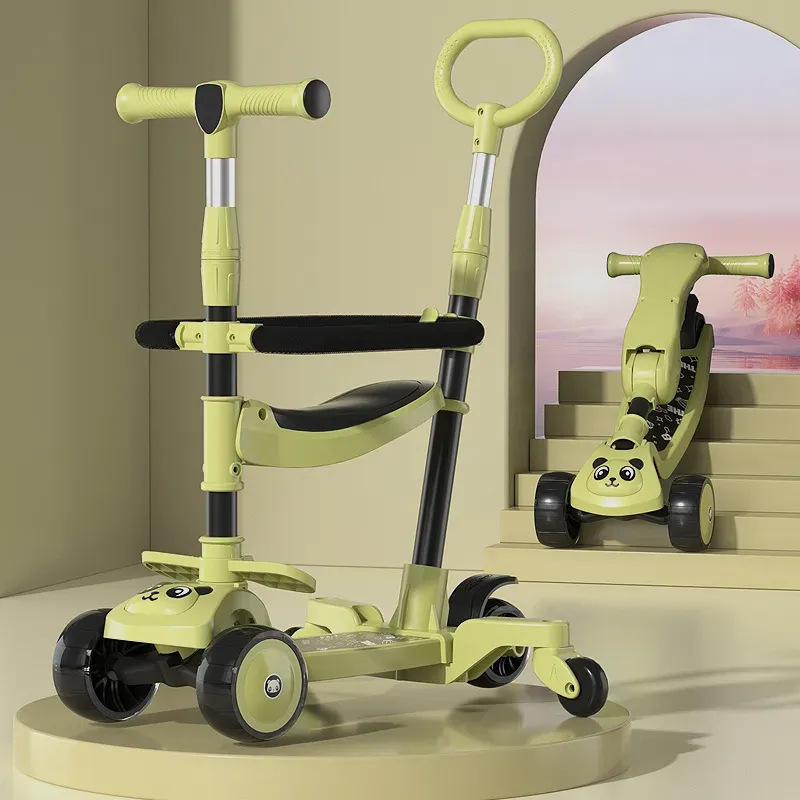Best Practices for Choosing the Right Bicycle for Your Child's Training Needs
The Importance of Kids' Training Bikes
When it comes to teaching children how to ride a bicycle, the journey from training wheels to two wheels can often be daunting. However, one of the most effective and engaging ways to help kids develop the necessary skills for riding independently is through the use of training bikes. Also known as balance bikes, these two-wheeled contraptions offer a simple yet effective solution for parents eager to introduce their little ones to the joys of cycling.
What is a Kids' Training Bike?
A kids' training bike is typically a small, lightweight bicycle designed for children aged 18 months to 5 years. Unlike traditional bicycles equipped with training wheels, training bikes lack pedals and gears. This allows young riders to focus solely on balance and coordination, essential skills for cycling. Children propel themselves forward by using their feet to push off the ground, gradually learning how to balance and steer without the added complexity of pedaling.
The Benefits of Training Bikes
1. Developing Balance One of the primary benefits of kids' training bikes is that they help children develop their balance naturally. By gliding along on the bike, children learn to shift their weight and maintain stability. This ability to balance is critical when transitioning to a traditional bike with pedals.
2. Boosting Confidence As children gain proficiency in maintaining balance on a training bike, their confidence surges. This newfound self-assurance encourages them to explore and take risks, laying a solid foundation for more advanced cycling skills in the future. When kids master the art of balancing, they’re more likely to feel empowered to tackle other challenges, both on and off the bike.
3. Encouraging Physical Activity In our increasingly digital world, encouraging physical activity among children has never been more important. Training bikes promote outdoor play and excercise, fostering a healthy lifestyle from a young age. Riding a bike not only strengthens muscles but also enhances cardiovascular fitness and coordination.
4. Increasing Independence Learning to ride a bike can be a rite of passage for many children. By using a training bike, children experience the joy of independent mobility, which can boost their enthusiasm for outdoor play. This independence also fosters a sense of responsibility as they learn to take care of their bike and navigate their surroundings.
kids training bike

5. Social Interaction Riding a bike often allows children to connect with their peers. Whether racing in the park or simply enjoying a leisurely ride, kids can bond over their shared experiences. Training bikes create opportunities for social interaction and teamwork, helping children to develop vital social skills.
Selecting the Right Training Bike
When it comes to choosing a training bike for your child, several factors should be considered
- Size It's crucial to select a bike that is the right size for your child. They should be able to sit comfortably on the seat with both feet flat on the ground. This ensures they feel secure and can easily push off and stop.
- Weight Lightweight bikes are often more manageable for young children. A heavy bike can be challenging and may discourage them from riding. Look for models made from aluminum or other lightweight materials.
- Adjustability As children grow, they will need a bike that can adjust to their height. Look for training bikes with adjustable seats and handlebars to accommodate your child as they develop.
Conclusion
Teaching kids how to ride a bike can be an exhilarating and memorable experience for both the parents and the children involved. Kids' training bikes are an excellent tool for introducing young riders to cycling. By focusing on balance and coordination, these bikes ease the learning curve, help develop essential skills, and foster a love for outdoor activity. Ultimately, the skills learned during this formative stage will pave the way for a lifetime of cycling enjoyment, instilling confidence, independence, and a passion for adventure in a child’s daily life. So, grab a training bike, head outdoors, and watch your child embark on their exciting journey toward becoming a confident cyclist!
-
Unleash Your Adventurous Spirit with All Mountain BikesNewsOct.31,2024
-
The Perfect Ride for Your Little Ones: Kids TricyclesNewsOct.31,2024
-
The Joy of Riding: Quality Kids Mountain BikesNewsOct.31,2024
-
The Excitement of Kids Scooters – Choose Your Adventure!NewsOct.31,2024
-
Kids' Bikes: Find the Perfect Ride for Your Little OnesNewsOct.31,2024
-
Experience the Fun of Swing CarsNewsOct.31,2024
-
Why a Giant Bike for Kids is a Top ChoiceNewsOct.24,2024








